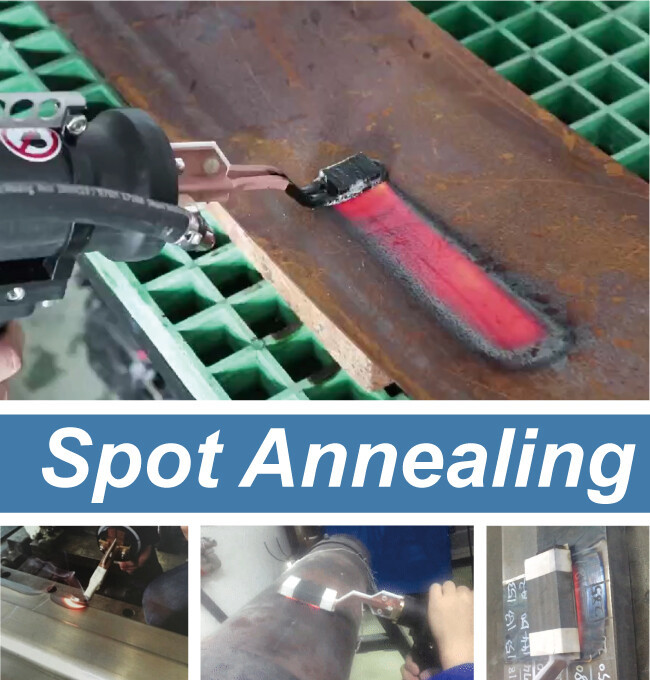
News
Induction heating equipment enhances annealing processes in factories. It operates more quickly by utilizing smart technology, which accurately controls heat for consistent material quality. Unlike traditional methods, it conserves energy and minimizes waste. This eco-friendly approach reduces pollution and increases work output. Induction heating equipment is highly efficient for the manufacturing demands of today.
Key Takeaways
Induction heating makes annealing faster by heating materials directly.
It allows better temperature control, giving even heat and fewer defects.
Induction heating is green, using less energy and making less waste.
This saves money for companies and helps the environment.

Faster Processing with Induction Heating Equipment
Shorter annealing times in factories
Induction heating cuts down the time needed for annealing. Unlike older methods using outside heat, it heats materials directly. This direct heating works faster and more efficiently. For factories, this means quicker cycles and better productivity. You can get reliable results faster, helping meet tight deadlines. Induction heating also lets you control power, time, and frequency for consistent quality.
Better productivity with focused heating
Focused heating is a big benefit of induction heating. It heats only specific parts of a material, saving energy and time. Industries like metalworking and glassmaking use this feature a lot. For example, in metalwork, it strengthens and improves parts by heating only where needed. This method increases production speed and reduces delays, letting you finish more tasks quickly.
Easier equipment setup than older methods
Older annealing methods need lots of setup time, slowing work. Induction heating fixes this problem. The machines are small and simple to set up, perfect for modern factories. Vacuum annealing, often done with induction heating, benefits from this easy setup. You can quickly adjust the system for different needs, saving time. This makes your work faster and ready for changing demands.
Precision and Control in Induction Annealing
Even heating for better material quality
Induction annealing heats materials evenly for better quality. Unlike old methods, it heats directly inside the material. This stops uneven heating and lowers the chance of defects. Machines let you set exact temperatures for the right time.
This even heating makes induction annealing great for industries needing top-quality materials.
Accurate temperature control for stress relief
Accurate temperature settings help remove stress from materials. Induction annealing lets you control heat during all phases. This keeps hardness and strength the same throughout.
Focused heating removes stress evenly.
Temperature changes are small, keeping properties consistent.
Cooling is controlled to protect the material.
Using induction annealing gives steady results and better product quality.
Stops overheating and material problems
Overheating can cause weak or uneven materials. Induction heating avoids this by heating inside the material and controlling the temperature. This shortens the process while heating correctly.
"Exact temperature control is key. Big changes can weaken materials."
Induction heating uses electromagnetic fields to heat efficiently. It softens materials and makes them easier to work with, perfect for high-heat metal industries.
Eco-Friendly and Cost-Effective Induction Heating Applications
Uses less energy and lowers pollution
Induction heating saves energy and cuts pollution. Unlike older methods, it doesn’t waste energy during start-up or shutdown. It converts 70-90% of energy into heat. Gas ovens only use 25-30% of energy efficiently. This means induction heating saves three times more energy and money. It focuses heat directly on materials, avoiding wasted heat.
Induction heating avoids burning fuels, so it’s cleaner for the planet.
Creates less waste in annealing
Induction heating is clean and doesn’t make waste or pollution. It transfers heat directly to materials, saving energy and reducing heat loss. Precise controls ensure fewer mistakes and less material waste. This makes it great for industries wanting to help the environment.
No pollution or waste created
Direct heat transfer saves energy
Accurate controls lower mistakes and waste
Saves money over time
Induction heating helps companies save money. It uses electricity, not fuels, and is 90% energy efficient. Faster heating speeds up work, saving time. The machines last longer because they don’t wear out quickly. This lowers repair costs and saves money in the long run.
Heats faster, saving time
Machines last longer with less damage
Lower energy bills due to high efficiency
Custom induction systems are made to fit company needs, ensuring better results and sustainability.
Induction heating makes annealing faster, accurate, and environmentally friendly. It heats materials evenly and quickly for better quality. Companies using it save energy, work faster, and make stronger products. Use induction heating to improve manufacturing and protect the planet.
FAQ
Which industries gain the most from induction annealing?
Industries like cars, planes, and metalwork benefit a lot. Induction annealing gives exact heating, better materials, and faster work.
Why does induction heating use less energy than older methods?
Induction heating turns 70-90% of energy into heat. Older methods waste energy when starting or stopping, but induction heats only the needed parts.
Is induction heating safe for workers?
Yes, it is safe. It uses electromagnetic waves, not flames, lowering dangers. Shields and controls keep workers safe during use.
Previous:
Next:
Please give us a message